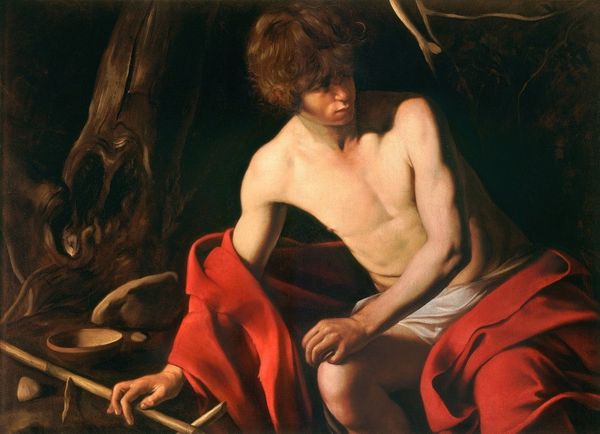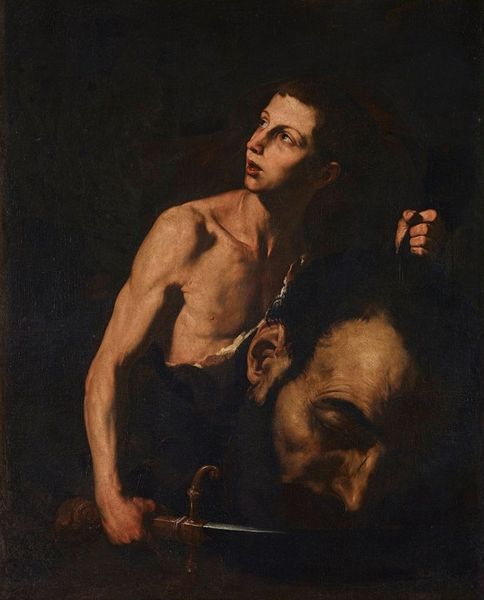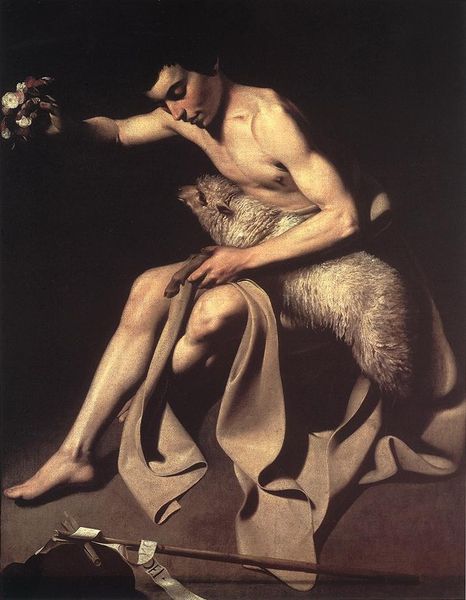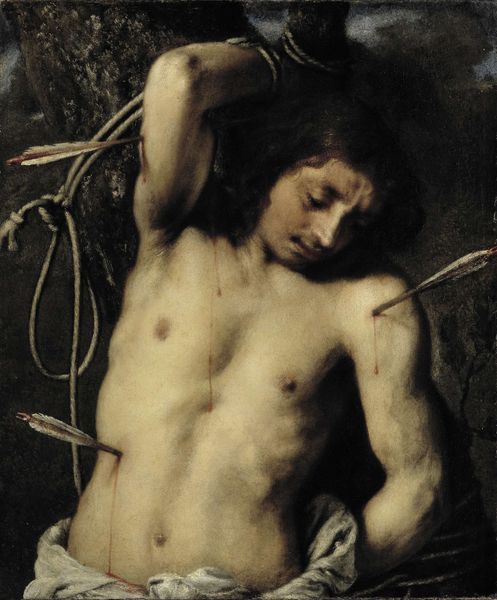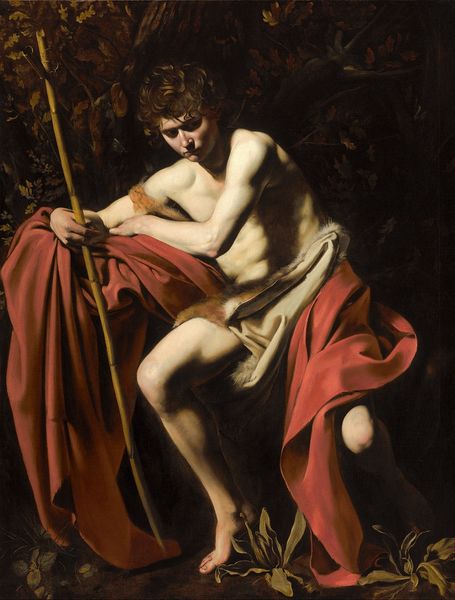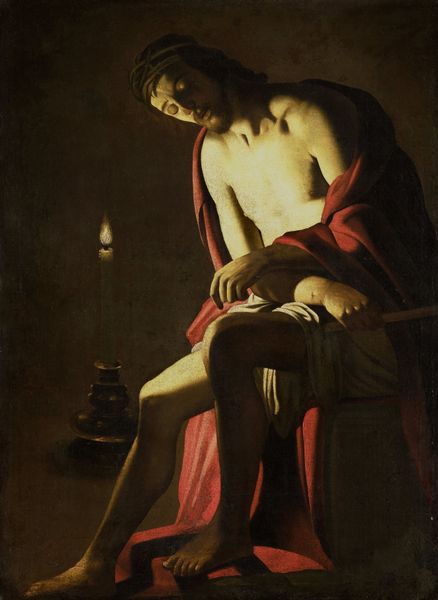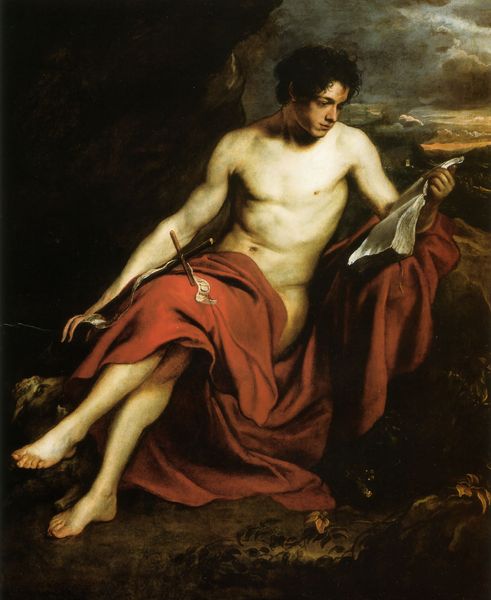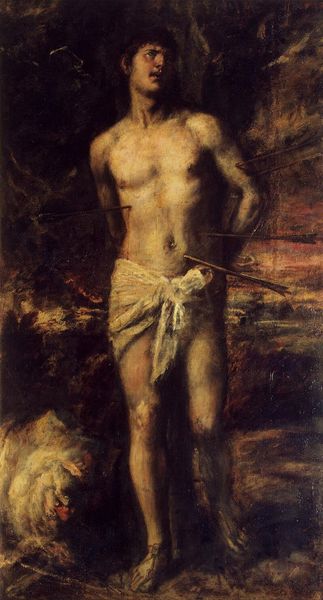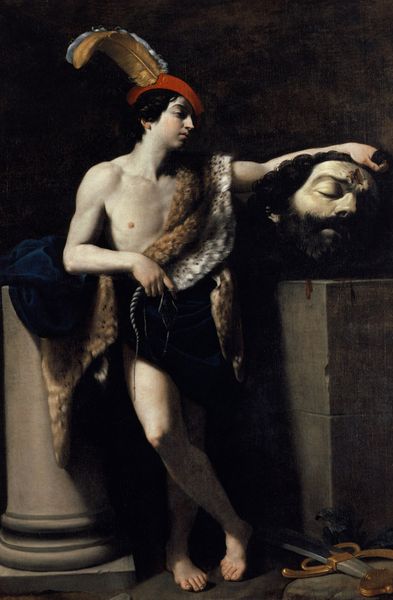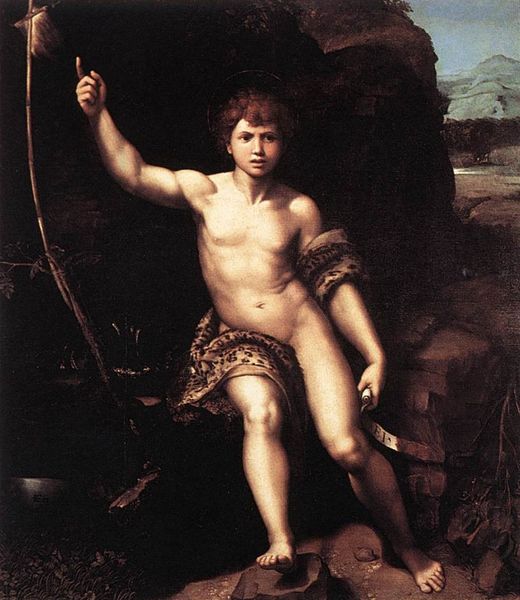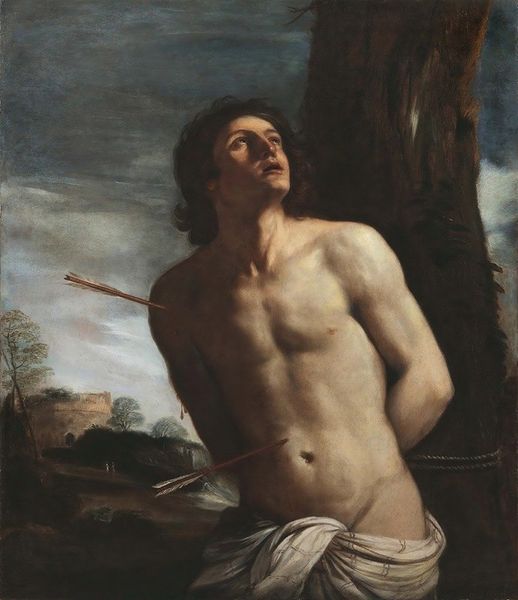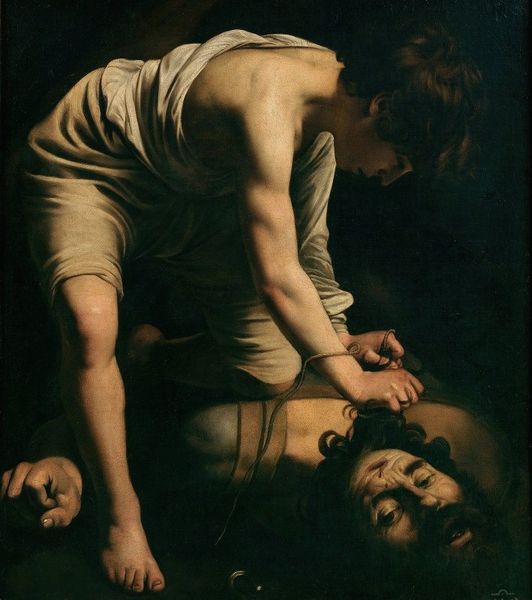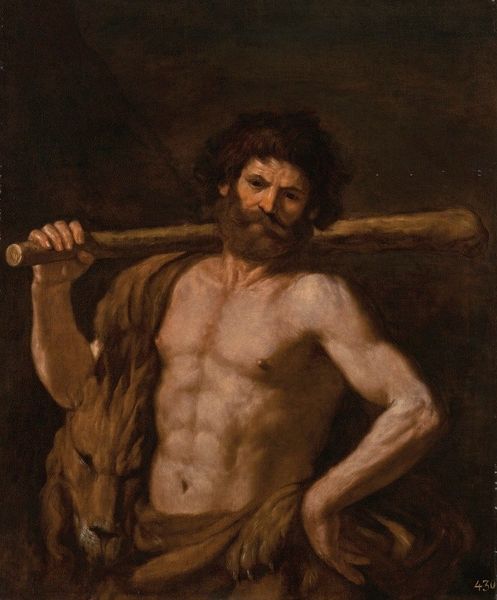
#
baroque
#
figuration
#
oil painting
#
christianity
#
italian-renaissance
#
nude
Dimensions: 100 x 73 cm
Copyright: Public domain
Curator: This is Caravaggio's "John the Baptist," painted around 1608. It’s an oil painting currently housed in Malta. Editor: It’s strikingly dark, almost monochromatic, with the figure emerging from the shadows. He looks incredibly human, almost vulnerable, for a religious figure. What can you tell me about it? Curator: Well, consider the materials and the act of making this painting. Caravaggio’s use of oil allows for that intense chiaroscuro, the dramatic contrast between light and shadow that defines the Baroque. Think about where he sourced those pigments. What did he grind them with? And then think about Malta: this wasn't Rome or Naples. This painting emerges from a specific set of circumstances. Editor: So, the setting itself influenced the work? How so? Curator: Absolutely. Malta, a hub for trade and military power, was a melting pot of cultures and, crucially, a source for particular materials. Were local pigments used? How does this inform our understanding of artistic exchange at the time? His materials are part of the place. It isn't just the Italian Renaissance. Think of how the commission for this painting must have factored into this specific rendering of St. John the Baptist, and consider the socio-economic forces that would shape Baroque art’s very means of production in the Mediterranean. Editor: That makes me see this painting in a completely different way. It's not just about religious symbolism, but the intersection of materiality, labor, and a specific time and place. Curator: Precisely! Considering these factors pulls the painting out of the realm of pure aesthetic contemplation and plants it firmly within a material reality. Editor: I’ll never look at a Baroque painting the same way again. Thank you for enlightening me. Curator: My pleasure. Considering the labor and material processes can really transform how we understand art history.
Comments
No comments
Be the first to comment and join the conversation on the ultimate creative platform.
